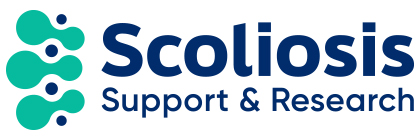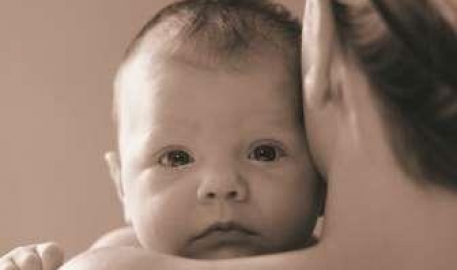Monday – Friday 9am to 5pm
Congenital scoliosis
Congenital scoliosis is a type of scoliosis that you are born with. The word “congenital” means that the condition is present at birth.
Prognosis
When your child’s congenital scoliosis is first diagnosed, it is impossible to predict how much the spinal curve will change as your child grows. Every curve is different. Some will increase in size more than others. Some will grow more quickly than others. The spine grows at its quickest in the first 5 years of life. During adolescence, the curve should still be regularly monitored by a scoliosis specialist.
Congenital scoliosis occurs when the spine does not develop fully in the womb. As a result, a baby is born with abnormally shaped bones in the spine. Congenital scoliosis differs from Early-onset scoliosis, which is found in younger children. It is vital that all children with congenital or early-onset scoliosis stay under the care of a scoliosis specialist throughout childhood. If you need to find your nearest specialist, contact SSR.
What causes it?
Congenital scoliosis happens because the vertebrae do not form as they should while a baby is growing in the womb. Vertebrae are the small bones that make up the spine; they are similar to a tower of building blocks. Some of these small bones might be missing, or some of them might not have formed fully, which can cause the spine to curve as it grows. This can start to happen in the first 6 weeks of pregnancy, but why it happens is not fully understood. Most causes of congenital scoliosis do not seem to run in families.
Diagnosis
It is common for women to have ultrasound scans during pregnancy. An ultrasound scan may show that a baby has congenital scoliosis. If the scoliosis is slight, it may not be spotted until the baby is born or until the child is older.
In some children, congenital scoliosis might not be obvious until the child approaches puberty/their teens.
What happens next?
If the scoliosis is noticed while the baby is still in the womb, an obstetrician (a specialist in childbirth) will discuss whether any special arrangements will need to be arranged for the birth.
Arrangements for further examinations with a specialist may be made after birth, too. Examinations may include:
- An X-ray, which will show which parts of the child’s spine may have not formed fully
- A CT scan, which produces detailed images of the structures inside the body, including internal organs, blood vessels and bones
- The hospital team may need to use the these test results to further assess the kidneys and heart. When a child is in the womb, the kidneys and heart form at the same time as the spine. When a baby has congenital scoliosis, the curvature of the spine could put pressure on organs. An MRI scan may also be needed to produce more detailed pictures of the spine.
Treatment
Monitoring
A specialist will monitor the size of the curve as the baby grows. Some children will have a curve that remains the same, whilst others will experience a growth of the curve. It is likely that you will see a specialist multiple times a year. The exact amount of visits can vary from patient to patient. On each visit, the specialist will take and compare X-rays, allowing them to assess the status of the curve. Some children will not need treatment because the curve straightens itself naturally. In this case, the child will be monitored by a scoliosis specialist until the curve has straightened.
Casting
Some children will need their spine to be guided into its normal position as they grow, which can be achieved by wearing a cast. The cast starts from the underarms and covers the top half of the body.
The cast is made of light materials and is worn constantly. As the child grows, the cast is changed regularly. Casts have a distinctive hole in the chest area, which allows the lungs to expand so that the child can breathe properly.
In children under 2 years old, the cast will be changed every 2-3 months as the spine begins to straighten.
Bracing
If the curve is increasing whilst the child is growing, the specialist may advise bracing.
The aim of bracing is to stop the curve becoming larger. Wearing a brace can mean that the child can keep growing for longer before a more permanent treatment, such as surgery. Braces should usually be worn for 23 hours a day. As the child grows, new braces will need to be made.
FAQs
Below is a selection of common questions we are asked by callers on our Helpline.
Scoliosis is a sideways curvature of the spine. Congenital scoliosis happens before birth and is caused by a problem with the development of the spine in the womb.
Congenital scoliosis is caused by vertebrae that are not properly formed. Vertebrae are the small bones that make up the spine. Congenital scoliosis usually happens during the first six weeks of pregnancy and most of the causes are unknown. Most causes of congenital scoliosis do not run in families.
Although congenital scoliosis is sometimes discovered before birth on an antenatal scan, many cases are not discovered until the child is a baby or toddler, and in some children it does not appear until their teenage years.
The patient will need to be examined by a scoliosis specialist. SAUK can help you find your nearest scoliosis specialist. The specialist will need to examine the patient unless the child is not born. They will take an X-ray or discuss the ultrasound scans with an obstetrician. An X-ray should show which parts of the child’s spine have not formed fully. CT and MRI scans are sometimes done to show more detailed pictures of the spine and check that there are no problems with the spinal cord and the development of the nerves.
The kidneys and heart may also need to be checked. This check is needed because they are formed in the womb at the same time as the vertebrae, which means something that affects the spine might affect the other organs. Children with congenital scoliosis have a 1 in 4 chance of having a problem with the kidneys or bladder or a 1 in 10 chance of a problem with the cardiac (heart) system. Lung and oesophageal (food pipe) problems can also occur as part of congenital scoliosis, but they are less common, affecting around 2 to 5 children in every 100 with a congenital spine problem.
When your child’s congenital scoliosis is first diagnosed, no one will know exactly how much the spinal curve will change as your child grows. Every curve is different. Some will increase in size more than others. Some will grow more quickly than others.
Because the spine grows most quickly in the first 5 years of life, and then during adolescence, these are times when the curve must be monitored most closely by a scoliosis specialist.
If you would like to talk further about any aspect of scoliosis, SSR is here to help.
If you need help or advice, call our helpline, contact us via post or e-mail: info@ssr.org.uk.
© 2024 Scoliosis Support & Research | Scoliosis Support & Research is a registered charity no. 1181463
Website design & development by Pedalo

